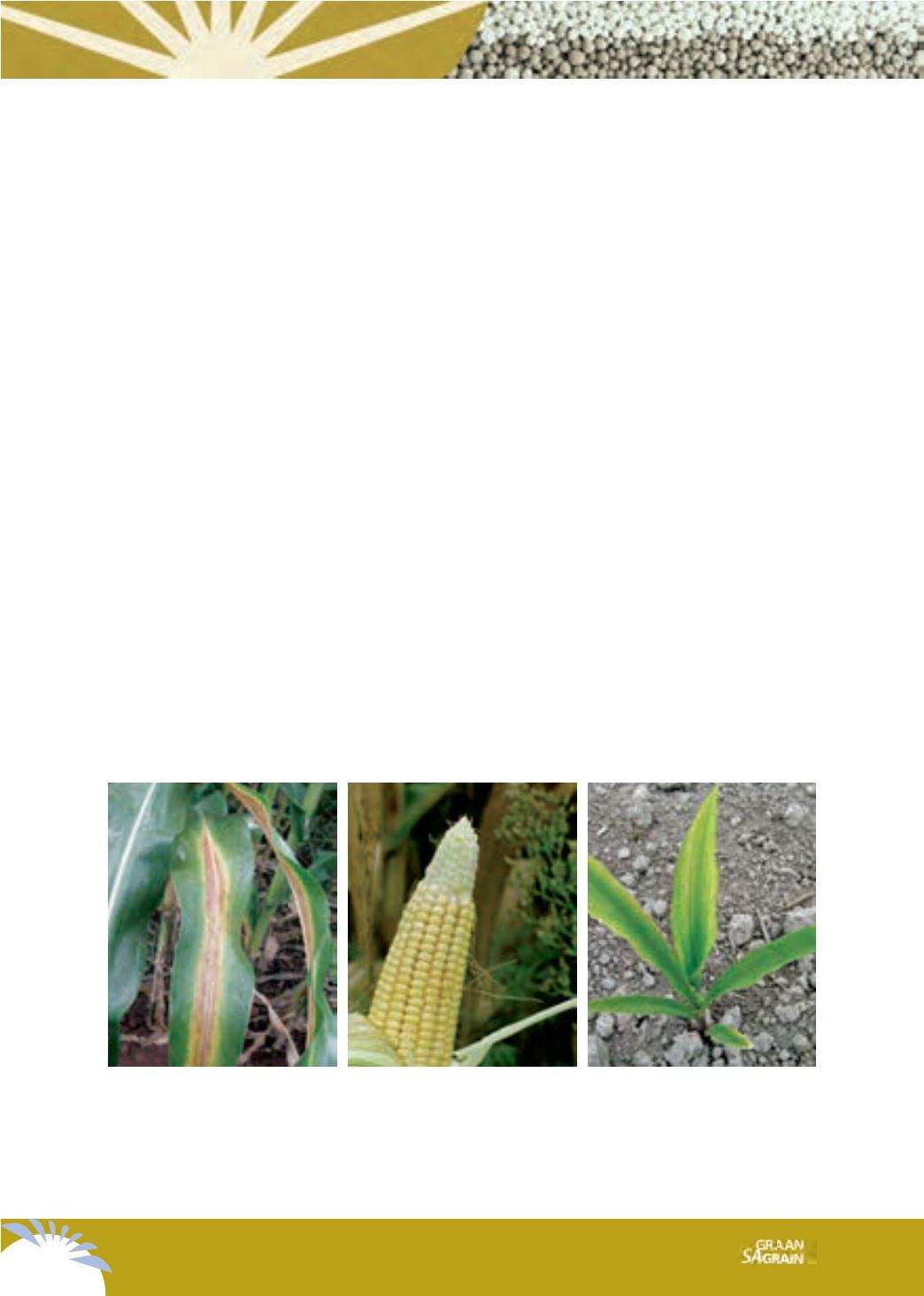

70
GRAANGIDS
2017
GRAIN GUIDE
Macro nutrient element deficiencies
in maize
Nitrogen (N)
• Deficiencies in young plants are usually accompanied by a pale, light-yellow-green
appearance.
• In older plants, a characteristic yellowed reverse V shape occurs on the leaves
(Photo 1)
.
• The ear shows a characteristic kernel-free sharp point
(Photo 2
).
Phosphate (P)
• Where the soil is very low in phosphate, the leaves, and particularly the edge of the leaf,
develop a characteristic purple colour.
• Phosphate deficiencies occur mainly in younger plants.
Potassium (K)
• Potassium deficiencies in mature plants are indicated by the thin, yellowed edges of leaves.
Sometimes the edges die off.
• Potassium deficiencies usually occur on the lower, older leaves.
• Kernels on the upper part of the ear are poorly filled and appear shrunken.
Magnesium (Mg)
• Magnesium deficiencies usually cause light yellow stripes on the lower leaves, which later
produce a beaded effect with round, dead spots.
• Magnesium deficiencies usually occur in more acidic soils.
• A high potassium content in the soil can induce a magnesium deficiency in the plant, displaying
as light-green stripes on the leaf.
Sulphur (S)
• A sulphur deficiency usually displays as a light yellowing of the leaves in young plants
(Photo 3)
.
Photo 1:
The characteristic
inverted V on a mature maize
leaf that indicates a nitrogen
deficiency.
Photo 2:
Incomplete filling
of an ear of maize due to a
nitrogen deficiency.
Photo 3:
Yellowing of leaves
due to a sulphur deficiency in a
young maize plant.
André Nel and William Deale, ARC-GCI, Potchefstroom

















